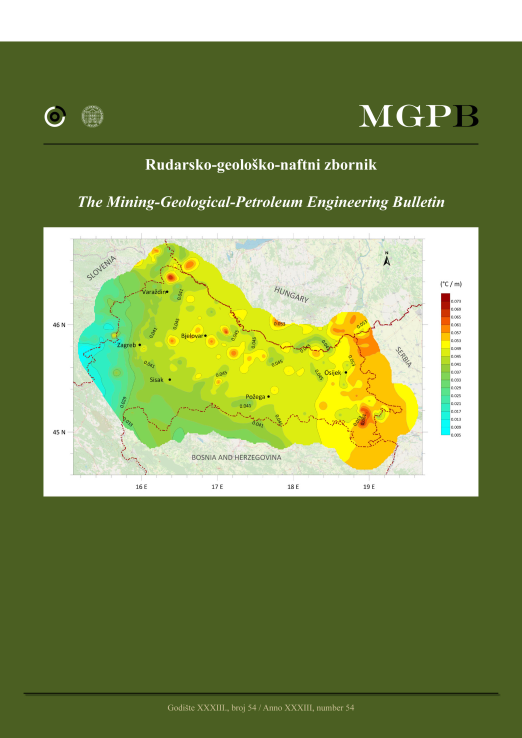Comparison of measured and estimated permeability for artificially prepared coarse-grained soil samples
DOI:
https://doi.org/10.17794/rgn.2021.3.12Keywords:
permeability coefficient, permeameter, constant head test, empirical correlationsAbstract
Knowledge about soil permeability is important in various scientific fields: hydrology and hydrogeology, geotechnics, environmental geotechnics, and others. Depending on the different goals that need to be achieved by a particular engineering project, the conditions in which the permeability coefficient is determined in terms of applied hydraulic gradients, applied stresses, type of test fluid, etc. are adjusted, as well as the required precision of its determination. In addition, the permeability coefficient is a soil property with the largest range of possible values. It can be determined through various laboratory and field methods, and by applying established empirical correlations using data on the grain-size distribution and empirical coefficients that depend on some factors, such as hydraulic radius (specific surface), curvature, porosity, etc. This paper presents the results of laboratory testing of the permeability coefficient by the constant head test and the use of a permeameter. The results were compared with the permeability coefficient obtained by applying a number of empirical correlations. Artificial samples were prepared in the laboratory by mixing different previously prepared soil fractions in order to determine the influence of particle size and soil gradation on the estimated soil permeability coefficient.
Downloads
Published
How to Cite
Issue
Section
License
Copyright (c) 2021 authors and journal

This work is licensed under a Creative Commons Attribution 4.0 International License.
Creative Commons-BY
Authors who publish with this journal agree to the following terms:
In agreeing this form, you certify that:
- You read the ethical codex of the RGN zbornik available at journal web.
- You submitted work is your original work, and has not previously been published and does not include any form of plagiarism.
- You own copyright in the submitted work, and are therefore permitted to assign the licence to publish to RGN zbornik.
- Your submitted work contains no violation of any existing copyright or other third party right or any material of an obscene, libellous or otherwise unlawful nature.
- You have obtained permission for and acknowledged the source of any illustrations, diagrams or other material included in the work of which you are not the copyright owner.
- You have taken due care to ensure the accuracy of the work, and that, to the best of your knowledge, there are no false statements made within it.
- All co-authors of this submitted work are aware of, and in agreement with, the terms of this licence and that the submitted manuscript has been approved by these authors.
Publication licence
You retain copyright in your submitted work, according to journal license policy (CC-BY). By signing this form you agree that RGN zbornik may publish it under the publication licence. In summary the licence allows the following:
Anyone is free:
- To copy, distribute, display, and perform the work.
- To make derivative works.
Under the following conditions:
- The original author must always be given credit.
- The work may not be used for commercial purposes.
- If the work is altered, transformed, or built upon, the resulting work may only be distributed under a licence identical to this one.
Exceptions to the licence
In addition to publishing the work printed under the above licence, RGN zbornik will also enable the work to be visible online.
The journal editorial can change the licence rules anytime but it cannot retroactively restrict author(s) rights.


